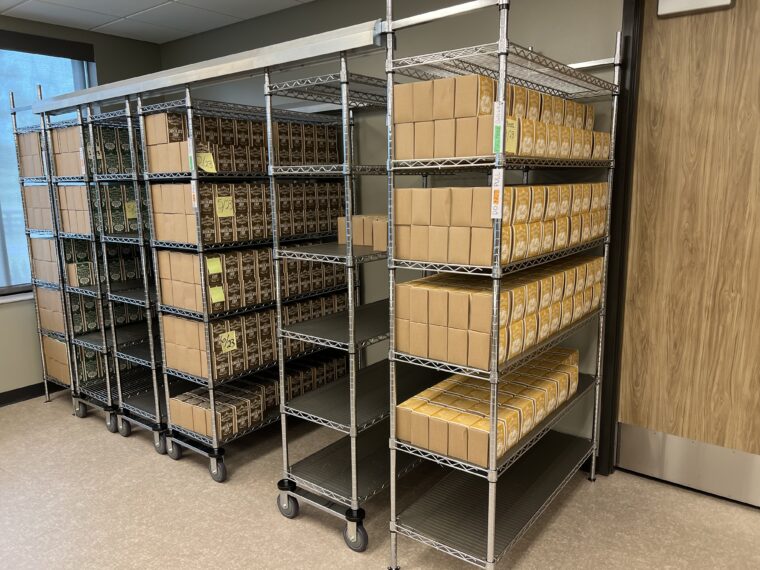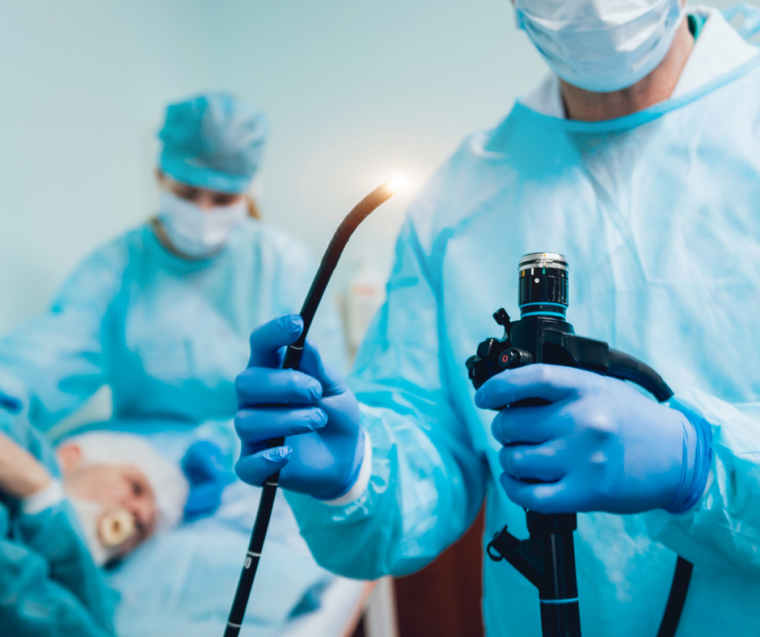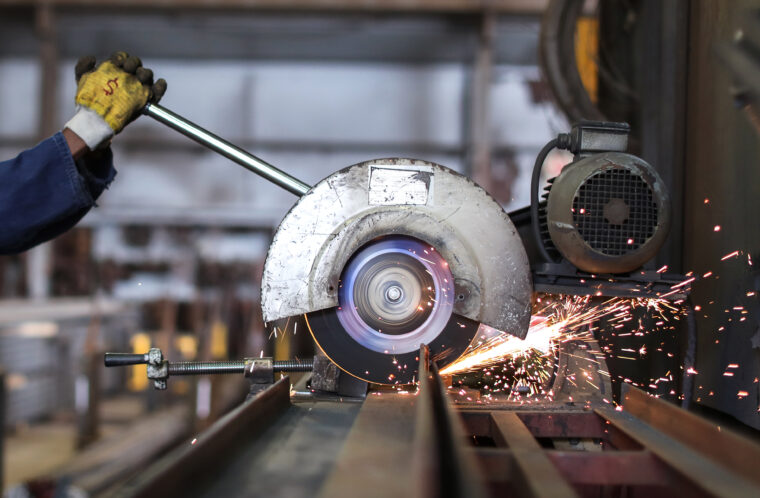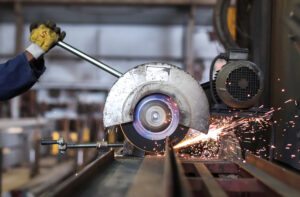BrightStone, a nonprofit organization that provides opportunities and solutions to adults with developmental disabilities, sends a newsletter around the Christmas holiday sharing a recap of the year, improvements and expansions to its facility, and a “Wish List” of needed items. When we realized that many of the Wish List items were among our product offerings, we offered BrightStone a donation of $15,000 in storage products.
We visited the inspiring 140-acre campus just south of Franklin, Tennessee, which was recently donated by a family with a student who attends BrightStone’s Center for Learning, Art, and Enterprise. Our initial evaluation was to gather ideas on what would be the most useful items to donate. In addition to the 23,000-square-foot center, the new campus, opened in November 2022, contains two residential teaching homes that are nearing completion. Each 3,900-square-foot teaching home features student bedrooms, bathrooms, a kitchen, a living room, a storm shelter, a covered entrance, a back porch and a carport. Home teachers will have their own private living quarters, and each adult resident will have a private bedroom and bathroom.
Health and wellness are vital parts of the BrightStone program, which teaches adults skills essential to their personal care—proper hygiene, education about illnesses and how to protect themselves, eating healthy, and proper nutrition. In addition to attending rotating classes throughout the day, BrightStone adults are encouraged to be active. Whether it is attending a field trip to the bowling alley or the park, or official physical education classes, they are often on the move! Twice a week, exercise class also includes therapeutic yoga, which can help increase strength, flexibility, balance and focus. With advances in medicine and treatments, the life expectancy for adults with disabilities is growing longer, creating the need for places like BrightStone to provide care, activities and fun for the students as their primary caretakers age.
 Offerings include a music program; a pottery center; a procurement center for the students to prepare and package cookie mix and a variety of teas; and the most popular item, which is hand-drawn Christmas cards made by the students. Several students were able to join us at our 24th annual Fish Fry, where they quickly took over the dance floor!
Offerings include a music program; a pottery center; a procurement center for the students to prepare and package cookie mix and a variety of teas; and the most popular item, which is hand-drawn Christmas cards made by the students. Several students were able to join us at our 24th annual Fish Fry, where they quickly took over the dance floor!
Our $15,000 donation provided a Storage Systems medical cart for their nurse, a large Harloff cabinet for storage of extra clothing in the nurse station, a partition used to divide a room to create extra classroom space, and two 12-foot Top-Track systems that allow for 30% more storage for the procurement center. The new shelving provides BrightStone with a more efficient and organized way to store the packaged food mixes and teas the nonprofit sells at its campus and with the assistance of local retail partners.
“We are proud to have sponsored the product and the installation of the new storage items at BrightStone,” said Bill Kreager, Chief Revenue Officer of Storage Systems Unlimited. “We believe that our products can help businesses to improve their efficiency and productivity, and we are so glad that we were in a position to lend a hand to an organization like BrightStone. They are building a very special place, and we are happy to be a part of it.”
ABout brightstone
BrightStone is a nonprofit organization that provides opportunities and solutions to adults with developmental disabilities. It offers a variety of services, including employment training, job placement, residential services and day programs. BrightStone is committed to helping its clients achieve their full potential and live independent and fulfilling lives. Learn more about BrightStone here.
ABout storage systems unlimited
Storage Systems Unlimited is a leading provider of storage solutions for businesses of all sizes, including nonprofits. SSU offers a multitude of storage-related products, including wire shelving, cabinets, carts and more. We also offer preferred pricing, planning, design, installation and project management for healthcare organization and storage systems. Want to learn more? Contact us at 1-888-614-0004 or request a quote today.











